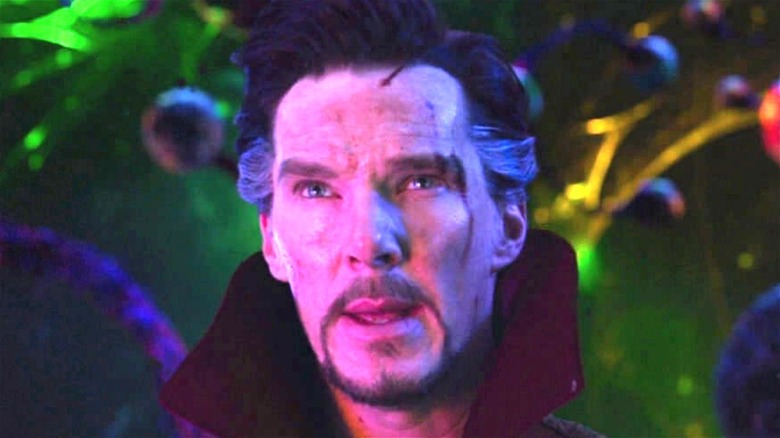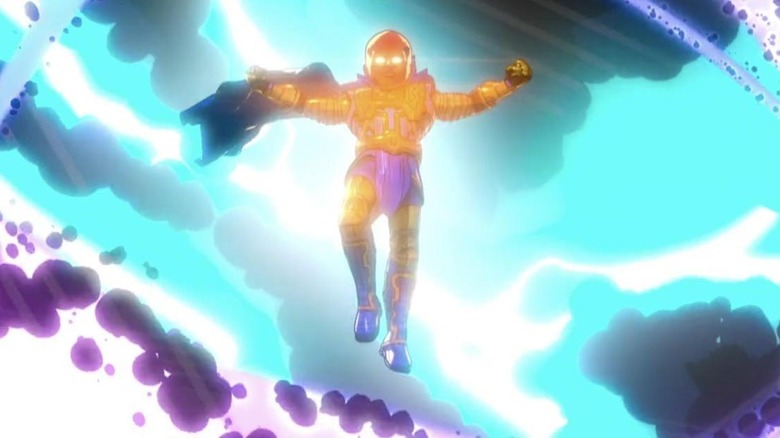What Is The Kirby Krackle In The MCU?
The Marvel Cinematic Universe is not exactly short of weird events. Though Phase 1 kept things comparatively grounded, the introductions of various space-faring heroes and villains, Doctor Strange (Benedict Cumberbatch), Ant-Man (Paul Rudd) and the like have steered the ship steadily towards the deep end of the weirdness pool.
As a result, the MCU of today is a far cry from the science-based beginnings of "Iron Man." Characters traverse time, space, and alternate universes, visit different planes of reality with magic and science alike, and generally do things that make Tony Stark (Robert Downey Jr.) building a suit of armor in a cave pale in comparison. As such, the special effects have also gotten wilder and wilder, as a quick look at, say, the massive mirror dimension scene in "Spider-Man: No Way Home" readily shows.
This, in turn, means that some of the wilder effects from the pages of the comic books have started to make their way in the MCU. Let's take a look at one of the most iconic ones, the Kirby Krackle.
What If...? introduces the Kirby Krackle dot effect
The Kirby Krackle is a visual technique pioneered by none other than Jack Kirby, the legendary comic book artist who played an instrumental part in making Marvel's comics become the success story you know them as. It's well-known for employing a series of complicated dot patterns to depict boundless energy (per Comic Book).
The Krackle makes its on-screen debut in the dramatic fight between The Watcher (Jeffrey Wright) and the Infinity Stone-powered Ultron (Ross Marquand) in the Disney+ animated MCU show "What If...?" According to director Bryan Andrews, introducing the Kirby Krackle in the MCU — and, in the grand scheme of things, in the toolkit of special effects workshops in general — has been a longtime aspiration of his, and he hopes that it'll catch on in future projects.
"I just wanted to do it forever," Andrews said "And then I've always been bummed that they haven't done Kirby Krackle on the live action movies, so I was like, 'We're doing it here, guys,' and everyone was like, 'Yay!' I think, now that we've done it and it looks amazing, I'm hoping that whatever weird thing that the visual effects people have been avoiding it for [is over] — I don't know why they would. Come on guys. Bring it, bring it! So we'll see. Maybe it's a new era of visual effects."
Andrews' hopes might very well be fulfilled in the future. After all, there are several upcoming MCU projects that seem like a good fit for future uses of the effect, such as "Doctor Strange in the Multiverse of Madness," "Ant-Man and the Wasp: Quantumania," and especially "Fantastic Four" — which is based on the comic Kirby used to make the Kirby Krackle famous in the first place.

